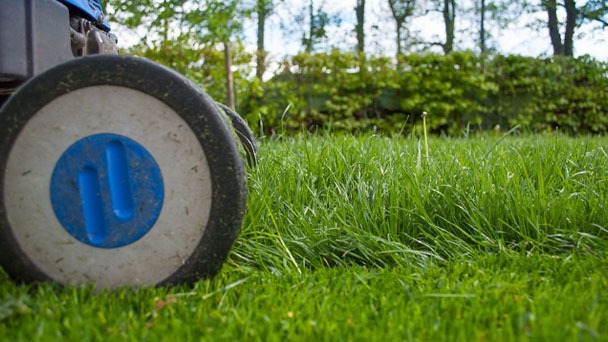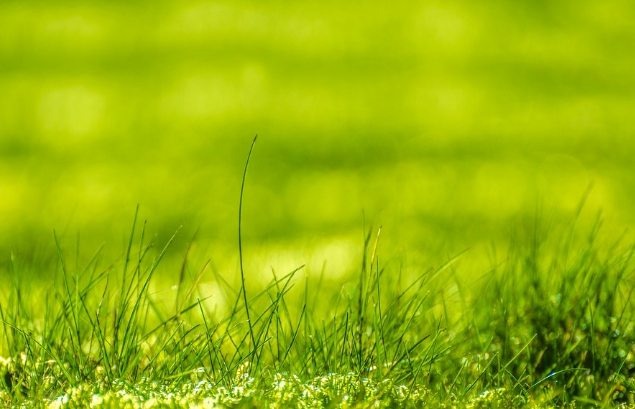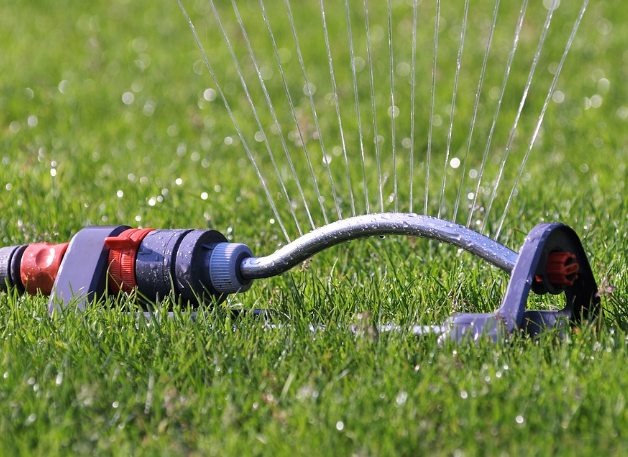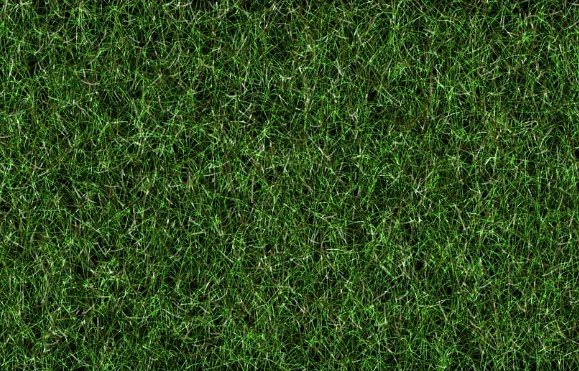Micro Clover Lawn Pros and Cons - Is It A Good Option?
Written by Ivy
Jan 05 2023

Let's make sure you're absolutely certain Micro Clover is the right choice for you and your yard before you decide to jump in and seed it. Let's examine the benefits and drawbacks of a Micro Clover lawn to find out what all the fuss is about.
Micro Clover might be what you're looking for if your lawn needs a boost and you're having some problems. This tiny plant can fill in your grass amazingly, giving you the lush, full lawn you've been striving for. However, let's make sure you're absolutely certain it's right for you and your yard before you decide to jump in and seed your lawn with Micro Clover. Let's examine the benefits and drawbacks of a Micro Clover lawn to find out what all the fuss is about.

Main Pros and Cons of a Micro Clover Lawn
On the plus side, Micro Clover keeps weeds out of your lawn, keeps it green all year round, and is a free natural fertilizer that replenishes your lawn's essential nutrients. On the negative side, Micro Clover needs to be reseeded and struggles with heavy foot traffic. (Read More: Micro Clover Lawn Review 2023)
What is Micro Clover
The Micro Clover, also known as Dutch White Clover, is a smaller or dwarf variety of the White Clover. It is a tiny broadleaf weed that originated in Europe and spread to America like many other plant species do. By means of natural dispersion, it eventually made its way onto lawns, and people began to notice.
As a legume, Micro Clover helps improve soil and gives lawns a thick, vibrant appearance. Seed growers started including clover seeds in their grass seed blends once they realized the advantages of the plant. Because of this, clover is now a typical lawn plant not just in America but all over the world.
The Pros of a Micro Clover Lawn Explained
Different clovers have been used in lawns for years, demonstrating that it is a solution that both works and works well. What distinguishes the Micro Clover, however, and what are its specific advantages? Let's examine the advantages and discover what makes it unique after looking at the benefits.
Natural Fertilizer
Plants called legumes transform atmospheric nitrogen into an organic form. As a result, the nitrogen produced by the Micro Clover improves soil quality quickly and gives the turf grass the food it needs. As Micro Clover will take care of it, you can therefore reduce the amount of fertilizer you add to the lawn.
Run Off Reduction
Nitrogen runoff can be decreased by reducing the amount of synthetic fertilizer used in the yard. Runoff occurs when fertilizers enter nearby waterways as a result of excessive spraying, overcasting, or rainfall. Both freshwater and saltwater algae are primarily fueled by the nitrogen in fertilizer. This explains why problems like red tide and dead aquatic animals in our rivers and lakes.
Non-Fertilizing Areas
Many municipalities have restricted the use of fertilizers in order to address nitrogen runoff. This may include no-go zones and nitrogen level restrictions. Numerous residents of coastal areas probably have a margin where they are not permitted to fertilize. For instance, I've seen city ordinances that prohibit fertilizing within 10 feet of storm drains and waterways. Micro Clover can therefore be a way to get around the dearth of fertilizer in these areas if you have one of these restrictions.

Keeps Its Green Color
As a legume once more, Micro Clover always has a ready source of nitrogen.
The primary nutrient needed to maintain the clover's vibrant green color is nitrogen. As a result, Micro Clover typically maintains its gorgeous green color all year long, provided the weather isn't too harsh.
Mixes With Turf Grass
Turf grass has been successfully used with Micro Clover, and it has even been reported to lessen thatching. You can also observe a decrease in the requirement for aeration. (Read More: How To Lay Turf - Lawn Laying Guide)
Less of a Clumper
If you've seen clovers in other lawns, you might have noticed that they tend to grow in clumps and can sometimes appear patchy. Don't worry; Micro Clover doesn't grow in the same way as patchy grass. Instead, this type of clover has a more organic appearance because it spreads evenly across the lawn. Well, provided you seed the lawn properly, that is.
Smothers Other Weeds
To prevent the growth of smaller plants, clover has long been used as a ground cover. This implies that the cover clover provides should deter weeds from germinating in your lawn. Micro Clover inhibits the growth of weeds, but does not have the same impact on turfgrasses.
Pollen Producer
When the clover blooms, it draws a wide variety of insects that are good for the environment and your yard. While keeping pollinator pests out of your way, micro clover aids in the pollination of the other plants in your yard. It is a fantastic source of food for the population of bees, which is constantly in trouble.
The Cons of a Micro Clover Lawn You Should Keep in Mind
Let's look at the disadvantages of Micro Clover before you get too excited about it. The drawbacks of Micro Clover are important to be aware of because not everything I've heard about it has been positive.
Heat Or Cold
They thrive in particular weather conditions, like most plants. Micro Clover is the same. Therefore, a Micro Clover lawn will struggle, die, or go dormant if the temperature is too high or too low.
Dormant in the Winter
Wintertime will make Micro Clover less alluring. It will stop growing and the tips will turn brown once the temperatures fall. Warmer climates won't have a problem because the Micro Clover won't actually stop growing.
Sun Plant
The sun plant Micro Clover is. This indicates that it needs 4-6 hours of direct sunlight. Thus, Micro Clover won't grow in areas of your yard that don't receive enough sunlight.
Broadleaf Herbicides
A weed with broad leaves, microclover is. So any herbicide weed killer you apply to your lawn will also kill the clover. This covers remedies like $5 weed sprays. Consequently, if you treat the weeds in your yard, you will unavoidably be harming the clover as well.
Susceptible to Blight
One issue that can really affect Micro Clover is blight. Therefore, Micro Clover might have trouble if you live in a humid climate. Browning leaves and a patchy, unappealing lawn are signs of blight.
Needs Reseeding
Clover cannot be planted from a single seed. Every 2-3 years, Micro Clover must be reseeded. Therefore, you should be aware that there will be additional costs in the future.
Finding Clover in Your Flower Beds
The way clover spreads evenly and doesn't clump is one of its advantages. It's unaware of your desire for it to halt at the edge of the lawn, though. Therefore, if you plant Micro Clover on your lawn, it will also grow in your flower beds.
Bee Allergies
Again, bees are beneficial to your yard and nature, but if you suffer from bee allergies, you should stay away from Micro Clover and all other varieties of Clover.

Micro Clover Vs. Regular Clover
When you hear "clover," you probably envision the well-known and widely-grown white clover. In the US, it is the most prevalent type of clover., growing 4-8 inches tall and producing white flowers with a pink hue in spring and summer.
Compared to "regular clover" (white clover), microclover grows lower to the ground, has smaller leaves, produces fewer flowers, and does not grow in clumps.
Which is the Best Partner Grass for Micro Clover
Certain kinds of grasses are best for helping Micro Clover grow. Therefore, be sure that the seeds will work on your lawn before grabbing a bag. The top collaborators for Micro Clover are listed below.
- Fine fescues
- Tall fescues
- Dwarf perennial ryegrass
- Kentucky bluegrass
Calling your neighborhood extension office could be helpful if you have any questions. They can advise a grass seed and Micro Clover blend that is most effective in your region.
Is a Micro Clover Lawn for You?
You most likely know by this point whether a Micro Clover lawn is a good fit for your yard. In conclusion, carefully consider all the issues we have raised by reading through the Micro Clover lawn pros and cons list.
- Provides Natural Fertilizer
- Fertilizes No-Go Zones
- Reduces Run Off
- Attracts Insects, Including Bees
- Spreads Into Flowerbeds
- Does Not Like Too Hot or Cold
- Becomes Dormant in Winter
- Not a Shade Plant
- Susceptible to Blight
- Needs Reseeding
Clover Lawn History
Having a lawn made entirely of clover might seem odd. However, a few dozen years ago, people would have thought our contemporary lawns were odd. It is actually a preference imported from France and England to think of an American lawn as a flat, uniform bed of a single turf grass.
In these countries, aristocrats transformed the wild countryside, which was home to a variety of species, into highly-cultivated, sprawling lawns of only grass. They preferred the orderly, cropped lines of a lawn to the chaotic richness that came from mother nature. (Check out our top lawn mowers advice if you can relate.)
In the 1800s, as having a meticulously maintained lawn had come to symbolize wealth, Americans started to emulate the French and English styles. Clover-filled American meadows gradually transformed into the typical image of a lawn that exists today by being mowed and trimmed.
This European influence may contribute to why some people today find clover unsightly. But in reality, the notion that a lawn must have only one type of plant was merely a arbitrary aesthetic preference that happened to catch on.
FAQ About Microclover
1. How Much Does Microclover Cost?
It can be quite expensive to buy microclover seed. The majority of microclover costs $30 to $40 per pound. You will require 1-2 pounds of seed per 1,000 square feet for a brand-new microclover lawn. As a result, the cost of seed for a 10,000 square foot, medium-sized lawn will range from $300 to $800.You won't experience quite as much sticker shock if you only want to use microclover to overseed your current lawn grass (though the cost is still quite high). A medium-sized, 10,000 square foot lawn will cost $150 to $400 to overseed because you must spread half a pound of microclover seed for every 1,000 square feet.
2. How Much Microclover Should Be in a Grass Seed Mix?
Approximately 3% to 5% of your lawn seed should be microclover if you decide to mix it with turfgrass or other clovers.3. When Should I Plant Microclover?
In the early spring, between mid-March and mid-April, sow your clover seeds. This will give your lawn enough time to grow thick, lush, and green in preparation for the summer.If you want to add clover as an overseeding to your lawn, you can choose to sow the seed in early fall (four to six weeks before the first frost). Plant your seeds in your lawn after aerating it to get your clover off to a great start. Baby clover roots will prosper if they have access to an abundance of water, air, and nutrients.
4. How Long Does Microclover Take to Germinate?
The average time for microclover to germinate is 7 to 14 days. To keep your soil moist during the germination period, water every day.5. How Tall Does Micro Clover Grow
In the United States, it is the most widespread type of clover., growing 4-8 inches tall and producing white flowers with a pink hue in spring and summer. Compared to "regular clover" (white clover), microclover grows lower to the ground, has smaller leaves, produces fewer flowers, and does not grow in clumps.
6. is Microclover Invasive
Micro clover does not colonize in the lawn; is non-invasive; provides greater competition to weeds; is less attractive to grub populations; and fixes nitrogen in the soil, reducing the need for fertilizers.
The Bottom Line
A great way to disprove the idea that yards need to be uninteresting in order to be beautiful is to install a clover lawn around your house. You can begin to transform your yard into a more captivating and dynamic haven for both people and wildlife by scattering it with plants like clover.
Latest Updated
- Benefits of Bugleweed - 7 Science-backed Health Benefits
- Bugleweed Dangers & Side Effects - Is It Poisonous?
- How to Plant Evergreen Trees - What You Should Know
- When to Plant Evergreens - Grow Guide for Evergreen Trees
- 12 Wonderful Evergreen Shrubs for Your Garden
- 12 Popular Evergreen Plants with Pictures for Beginners
- When And How To Prune A Lilac Bush Like a Pro
- How to Grow & Care for Lilac Vine (Hardenbergia Violacea)
- Japanese Lilac Tree (Syringa Reticulata) Care & Propagation Guide
- Shumard Oak Pros and Cons - What to Know
Popular Articles
- Winter maintenance of Antirrhinum Majus
- How to Grow Terminalia Mantaly Tree
- How to Grow and Care for Crossostephium Chinense
- How to grow Antirrhinum Majus in spring
- Peristeria Elata (Dove Orchid) Profile: Info & Care Guide
- Underwatered Snake Plant (Sansevieria Trifasciata) - Signs And How To Fix
- How to Care for Brazilian Jasmine Plant (Mandevilla Sanderi)
- How to Grow & Care for Graptopetalum Purple Delight in Summer
- Rosa Chinensis (China Rose): Plant Growing & Care Tips
- How to Care for Baby Sun Rose (Aptenia Cordifolia)